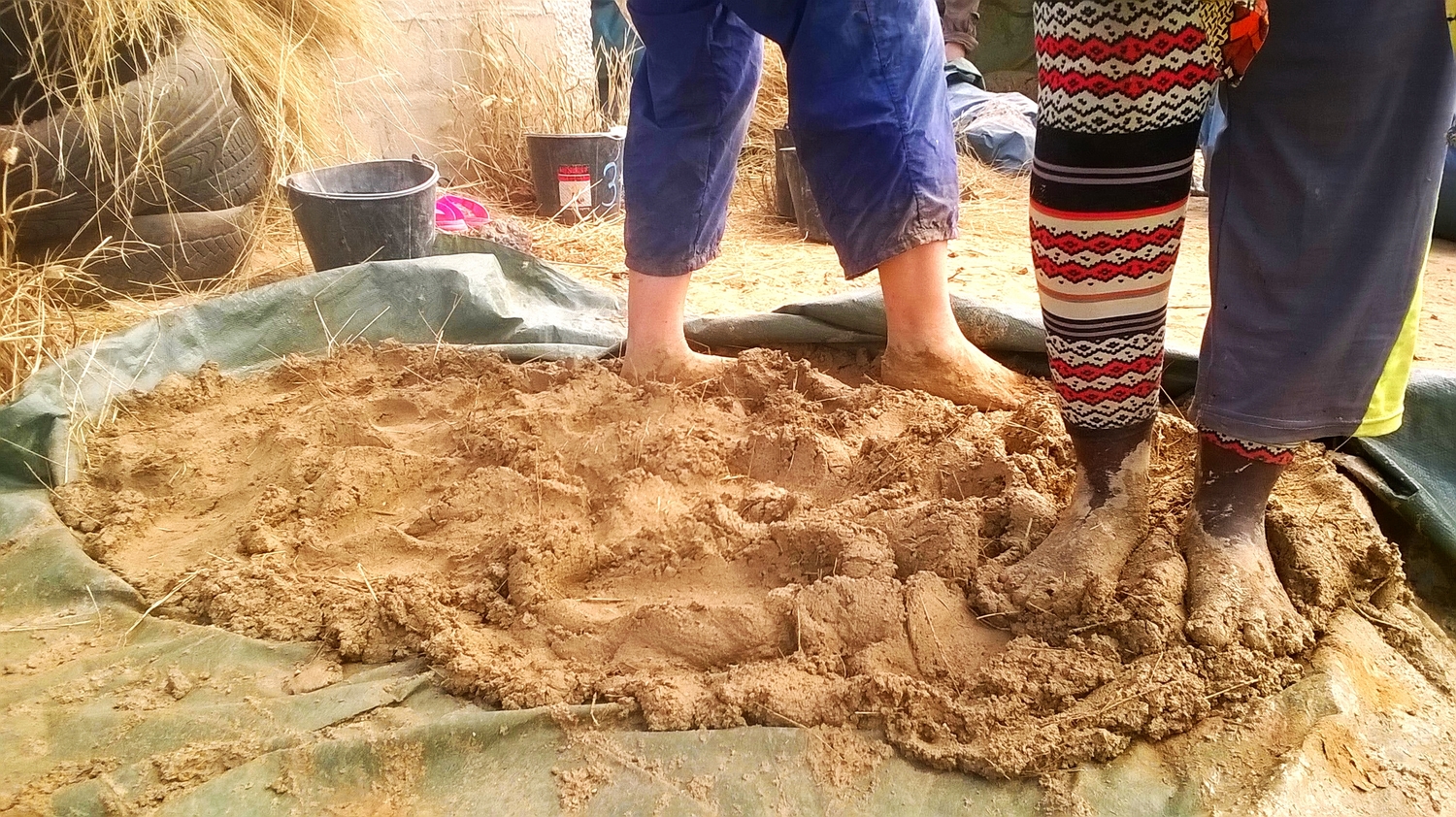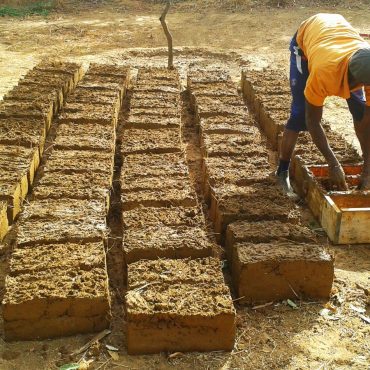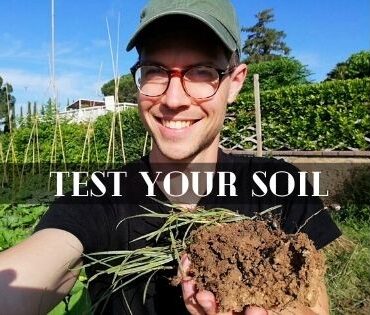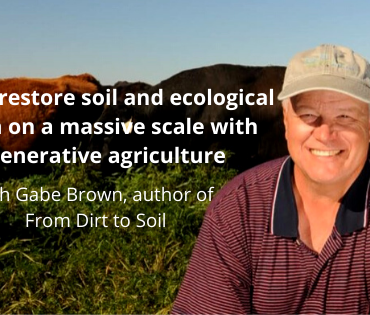
Interview With a Natural Builder: Jan Afton
One week before this interview Carole Crews introduced me to a friend of hers she thought I’d be interested to meet. We met Jan Afton on a tempestuous afternoon as […]

Since the beginning of human history earthen building methods have been the primary forms of construction. Even today it is estimated that between one third and a half of the worlds population still lives or works in earthen buildings. One of the simplest and also strongest of these building methods is called “Cob.” Though it goes by other names in different places, cob refers to a mixture of clay subsoil, sand, straw, and water that is mixed together to make a malleable mud that is formed into monolithic walls. When the cob dries it becomes hard and creates incredibly durable walls and columns. The ubiquitous ingredients used to make the mixture, and the simple construction techniques required to build with it have been used to create some of humanity’s most enduring structures. Here we’ll explore some of the history of cob building, take a look at the advantages and challenges of using it as a construction material, and talk about some modern examples of cob structures.

Cob is one of history’s oldest building materials, and has been used all over the world. Many of the oldest standing structures in places like central Asia, the Middle East and sub Saharan Africa are made of cob. Known regionally as “tabya” cob was also used commonly in the Maghreb and al Andalus regions. Most prominently though, we see prolific use of cob throughout the history of England and the UK. It is thought that cob as a building technique evolved from earlier wattle and daub building. While cob structures have been discovered that date back to the 13th century, cob construction didn’t become the norm in Great Britain until the 15th century. It remained common, especially in Wales and the counties of Cornwall and Devon, until industrialization made fired brick more available in the 18th century. As many as 20,000 cob structures still remain in the county of Devon alone. There it has been common for homes to go for as long as 100 years without needing repairs. British colonialists also brought cob building to New Zealand, Australia, and North America where, despite harsh weather and earthquakes, many of these homes have survived and are still in good use.
Though cob as a building material had declined significantly since the industrial age, it has begun to see a revival in recent decades. Kevin McCabe of Devon county, Britain, has received a lot of attention for building the first new cob home in England in over 70 years with the completion of a two-story, four-bedroom home back in 1994. Aside from using a large excavator to mix the cob, Kevin has stayed true to the traditional methods of British cob by building very thick and rounded exterior walls, forking the mixture onto the walls, and treading it in place. Since then, he and many other cob builders have completed numerous projects all over the UK.
The cob resurgence in North and South America has been fueled by a variation on the traditional British technique known as “Oregon Cob.” Developed by Ianto Evans and Linda Smiley of the Cob Cottage Company in Coquile, Oregon, it has a few distinct advantages over the traditional techniques. With Oregon cob, more emphasis is put on obtaining a proper ratio of sand, clay, and straw in the mix. This contributes to a stronger wall that can then be built thinner and more sculpted than the thick walls found in the UK. It’s not unusual with Oregon cob to build exterior walls that are only 20-12 inches (50.8-30.5cm) thick rather than 2-3ft (.7-1meter) thick for British cob. Interior non-load-bearing walls can be as thin as 10-4 inches (20.5-10cm).
More recently, architect Eike Roswag of Ziegert Roswag Seiler Architekten Ingenieure in Germany has brought cob to international attention by winning the Holcim gold prize for the the “Tipul Sultan Merkez” school in Jar Maulwi, Pakistan. The lower portion of the school building is made entirely of cob, while the second level is built with local bamboo. Examples such as these help to illustrate how this ancient building method can be integrated with other local and natural building materials to create beautiful and healthy structures almost anywhere in the world.
In the efforts to revive and promote cob as a building material, new methods and techniques for mixing and construction have emerged. Oregon cob has become well known for making this labor intensive practice accessible to anyone by scaling the process down. Small mixtures can me made individually or in groups by mixing the materials on tarps. The mix is then formed into loafs called “cobs” that can be transported easily to where they are needed on site. Cob can also be mixed in larger batches in pits. With this technique, all of the necessary materials are thrown in, water is added, and it can all be combined by stomping it by foot or by animals tread it. Machine mixing can also yield good results and allows for a lot of labor to be saved if you have the resources to spend. In this way, potentially all of the cob needed for a project could be mixed in one day, and kept moist and covered until it’s needed for building. Traditionally, after the material was put into the wall, it was tread by foot into the layer below it and slapped into form with paddles to obtain the desired shape and level of the wall. More commonly now with modern techniques, shovels, machetes, or saws are used to trim the wall to form, and the cob that is trimmed off is simply put back on top or reused in the next mix. It is always best to do the trimming before the cob dries and becomes much harder.

Despite its recent growth in popularity, cob and all of its properties and characteristics are still not very well known, and while it has many advantages, it also has it’s limitations. One of the biggest advantages is that the material to make cob is either free or very cheap. If you can find suitable clay soil, sand, and straw either nearby or on site, you may not even have any transportation costs. Cob is also incredibly strong, even in earthquakes (due to it’s monolithic form) it performs very well without reinforcements. Cob is a great thermal mass. Because of its density, it transfers both heat and cold very slowly which help to maintain a constant interior temperature even when there are large temperature swings outside. Cob is ecologically friendly. Because it doesn’t include any toxic or industrial ingredients there is no risk of off-gassing or contamination as there is with many modern construction materials. In fact, when its useful life is over, cob can simply be put back on the site that it came from. Another advantage is that cob wont rot, and can last indefinitely if maintained because it is made of mineral, not biological ingredients. It also doesn’t require any machinery or chemicals to produce. Cob is highly sculptural and not limited to rectilinear designs. Because of its plasticity, cob walls can easily be built and molded into just about any form you desire. Though machinery such as tractors and backhoes can be used to mix large quantities of cob, you can just as easily use the traditional method and mix it with your bare feet and hands. Given how easy and affordable it is to get started building, cob makes it possible for anyone to get involved in it’s mixing and construction. In this way the whole community, young and old, can contribute and participate in the build project together.
Despite all of the clear advantages, there are also a few limitations and challenges to consider. Making cob may require that you import the materials if they are not available on site (though this is no different from any industrial construction site). Cob can be very labor intensive. In comparison to assembling pre-made bricks or framing, cob requires a lot of labor. The slow dry times when building with cob could also slow down construction. Different climates create different challenges, and cold, wet weather can significantly slow down the progress of a building. Cob is not an effective insulator. While thermal mass has many advantages, it will not keep cold (or very hot) temperatures out indefinitely, and this is something to consider if you live in a climate with these extremes. Cob can be compromised by being soaked, or if it freezes while it’s wet. Because its primary binding ingredient is clay, cob can quickly soften or even erode if it is allowed to soak in water for a significant amount of time. If it is allowed to freeze before it dries, the expansion of frozen water inside the mixture could make it crumbly and lose its structural integrity. For these reasons, it is not not suitable to build with cob in every climate or site, or at least not without significant amendments. If these limitations are considered in the design and siting of your building they shouldn’t pose an insurmountable challenge.
In conclusion, when used correctly, cob is a wonderful and durable building material. Even in places where a full cob structure wouldn’t be ideal, it can be used in conjunction with other natural materials so that it isn’t called upon to do all tasks. Cob not only builds shelter, it builds community. Because of its simplicity and safety, anyone can participate in building with cob. This inclusivity makes it a much more democratic and community oriented construction material. Cob and earthen building have been around for most of human history, and their proven track record as a high quality and ecologically friendly method of building are finally being recognized once again as a legitimate form of construction in modern applications. The revival of cob is creating new possibilities and advantages all the time. As more people continue to rediscover this building technique they are adapting it to their specific ecology; even advances in technology have improved the process.
If you’re interested in building with cob, it is incredibly easy to get started, and anyone can do it. The necessary materials are likely in your back yard. Just start by testing the suitability and clay content of your subsoil and go from there. If you would like more instruction on mixing and building there are many tutorials online and workshops that teach these techniques. The possibilities with cob are only as limited as your imagination.
Tagged as: building materials, Articles.

One week before this interview Carole Crews introduced me to a friend of hers she thought I’d be interested to meet. We met Jan Afton on a tempestuous afternoon as […]



Copyright Regenerative Skills 2021
Post comments
This post currently has no comments.